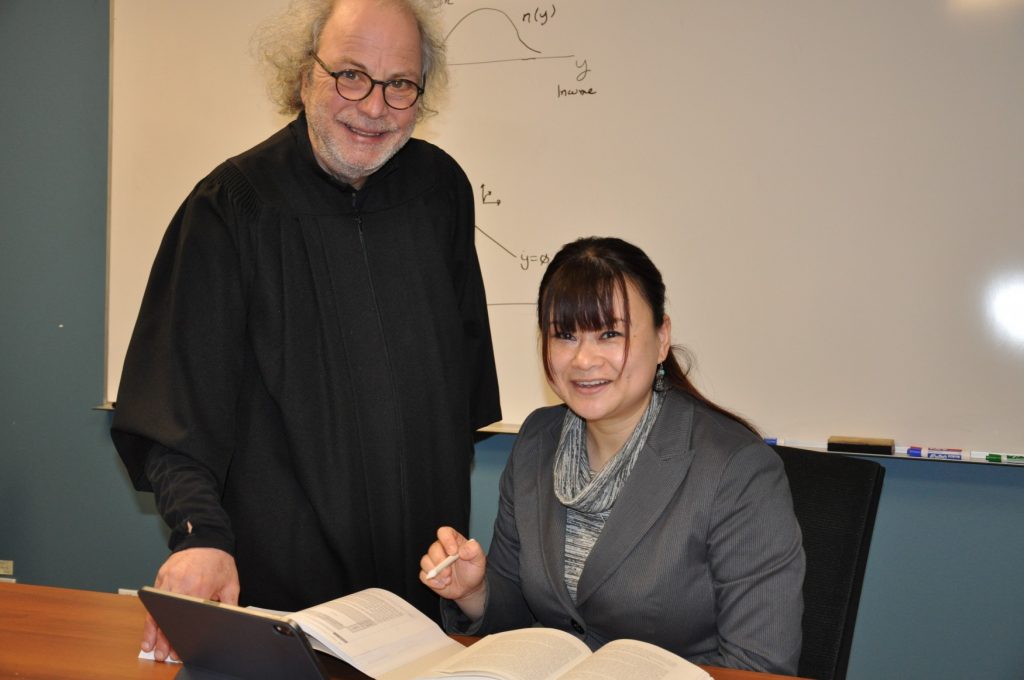After hours of Zoom calls and piles of emails, many locals find respite in going for a hike in one of Kamloops’ parks. It’s easy to understand how these recreation areas benefit our physical and mental health, but do we understand their true value? TRU business students are finding out.
In a year defined by social distancing, people in Kamloops flocked to local parks. The City of Kamloops reported a 64 percent visitation increase in 2020 over the previous year. But as students are discovering, parks are more valuable than the trails they provide for hiking and biking. They provide a wealth of ecosystem services — benefits nature provides us for free, such as carbon storage and air purification — which makes them among the topmost valuable assets to our area.
Recently, economics students presented on the economic value of Kamloops parks. Economics Professor Peter Tsigaris was inspired by an article he read about similar research done on New York City’s Central Park and thought it would be an interesting project for students that could also inform the Kamloops community about the value of urban parks.
They found the value of ecosystem services provided by Kamloops municipal parks, including B.C.’s largest municipal park, Kenna Cartwright, and the 15,717 hectares Lac Du Bois Grasslands protected area, are equal to over 70 percent of local gross domestic product (GDP). And even that could be too modest.

Master of Science in Environmental Economics and Management graduates Rien Okawa and Janelle Zimmer presented similar findings on the value of parks and protected areas in their thesis presentations earlier this year.
Okawa calculated that the combination of the Lac du Bois Grasslands, Dewdrop-Rosseau Creek, Tranquille Ecological Reserve and McQueen Creek Ecological Reserve areas are worth over $140 million when accounting for the ecological services nature provides. But the actual benefits are much higher when these areas are looked at from a holistic approach that incorporates the interaction of all forms of capital (i.e., social, human, built and natural) for sustainable human well-being. Okawa said doing this research opened her eyes to all the work nature does for people that goes unrecognized and she hoped research like hers leads to more funding and protection for areas like the grasslands.
To that point, the BC government recently announced $83 million to fund more campsites, staff and trail improvements over the next three years. Zimmer, who did her thesis on the economic value of BC parks, said they play a significant role in generating economic activity in the province and beyond, including providing over 13,000 jobs in the province and over 17,000 across Canada.

“We often see the environment as a separate entity, when really it’s interconnected with the economy,” she said. “The environment isn’t free per se. It costs resources to manage parks and people spend resources to visit these parks, for example. I think in Canada, we might take how much nature we have for granted.”
As Canada announces an ambitious plan to further reduce greenhouse gas emissions to 40 to 45 percent of 2005 levels by 2030, could understanding the true value of parks and protected areas help conservation efforts?
“We humans impact the natural environment negatively and therefore we have to regulate human activity to protect it,” said Tsigaris, adding that this relatively new field of economics, ecological economics, aims to integrate the environment with the economy and place a value on nature to protect it.
So, this Earth Day, as you go for a stroll in your local park, consider not only the value you get from exercise and the peaceful sounds of chirping birds, but also how it serves your community in terms of air, water, soil, culture and more.

